Content
Unlocking AI: Key Takeaways from Google’s AI Essentials Course
Unlocking AI: Key Takeaways from Google’s AI Essentials Course
Unlocking AI: Key Takeaways from Google’s AI Essentials Course
Danny Roman
November 1, 2024




Ever wondered what artificial intelligence is really all about? Wonder no more. In this blog I’m breaking down, or rather, deconstructing, the main insights from Google’s AI Essentials course, bringing them down to their bare essentials and relating them to a real-world context for the AI beginner.
🚀 I took Google’s AI Essentials Course
Earlier this week, I completed Google’s AI Essentials course. After investing five hours of my life and $49, I exited with a whole new fund of learning. Time well spent? Yes! This course delivers the essentials of AI, at least the present-day concept of it.
What have I learned? Let me unpack my lessons. There is a section about AI tools, which I enjoyed learning about. Another section examines prompt engineering … and… and … And okay, so it is 100 words and I don’t know what to write anymore. Have I learned anything? Well, I know a lot more about AI, and I’m getting better at prompt engineering… but so? It is not as if I’ll be creating actual things with all this knowledge. And anyway, who would read through all that? This is not for me, this is for tech wizards. I’m a novice, and novices like reading articles about things that will magically improve their skills. This is not another tech article.
🔍 There are 3 Types of AI Tools
First off, let’s define the three types of AI tools. Knowing what these are will help you find the tool that most suits your needs.
Standalone Tools: These are your go-to AI software that operates independently. Think of chatbots like ChatGPT and specialized apps like MidJourney. They are designed for minimal setup and are easily accessible.
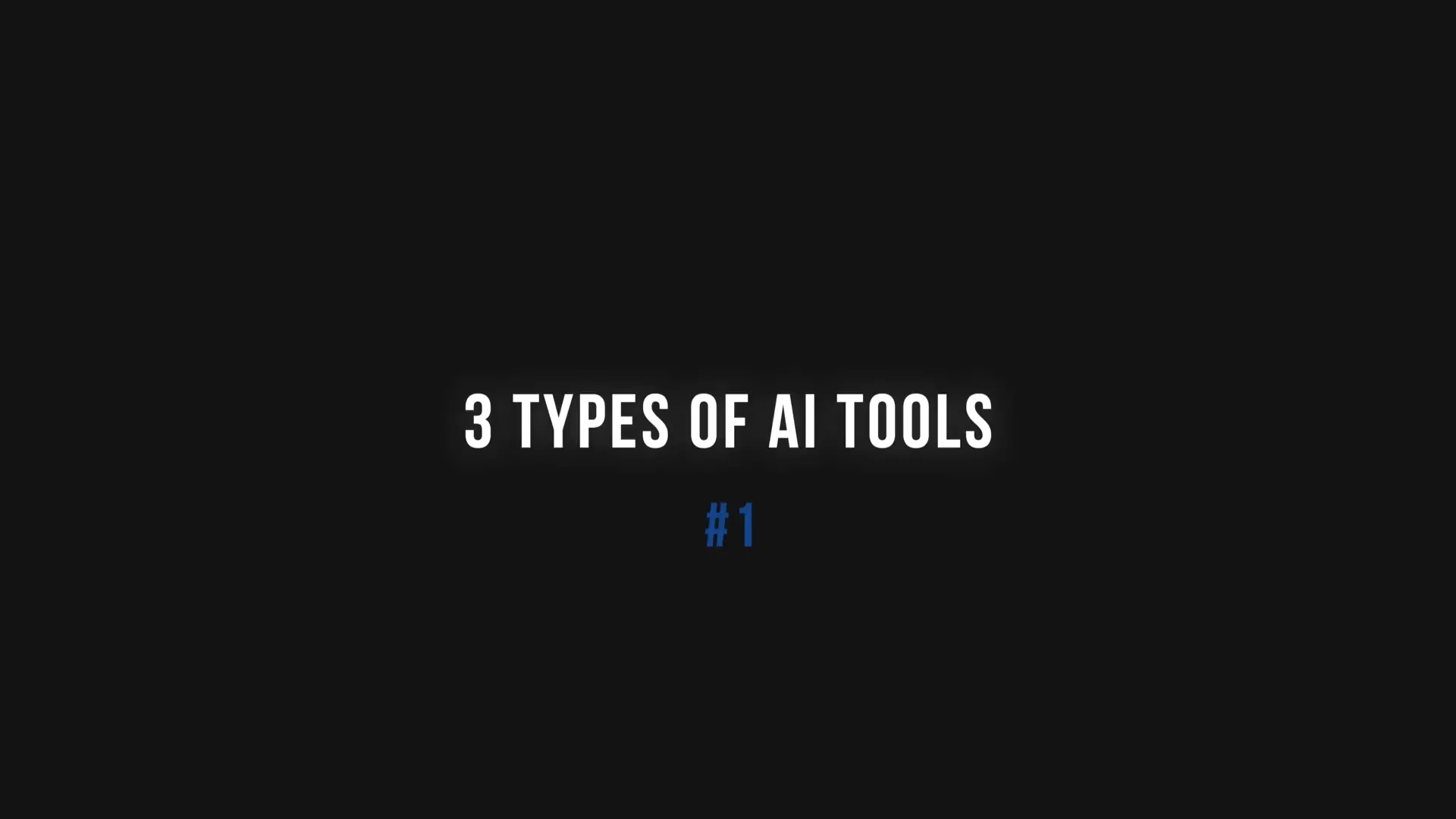
Integrated AI Features: These tools enhance existing software. For example, Google Docs has integrated AI features that help you refine your writing without leaving the platform.
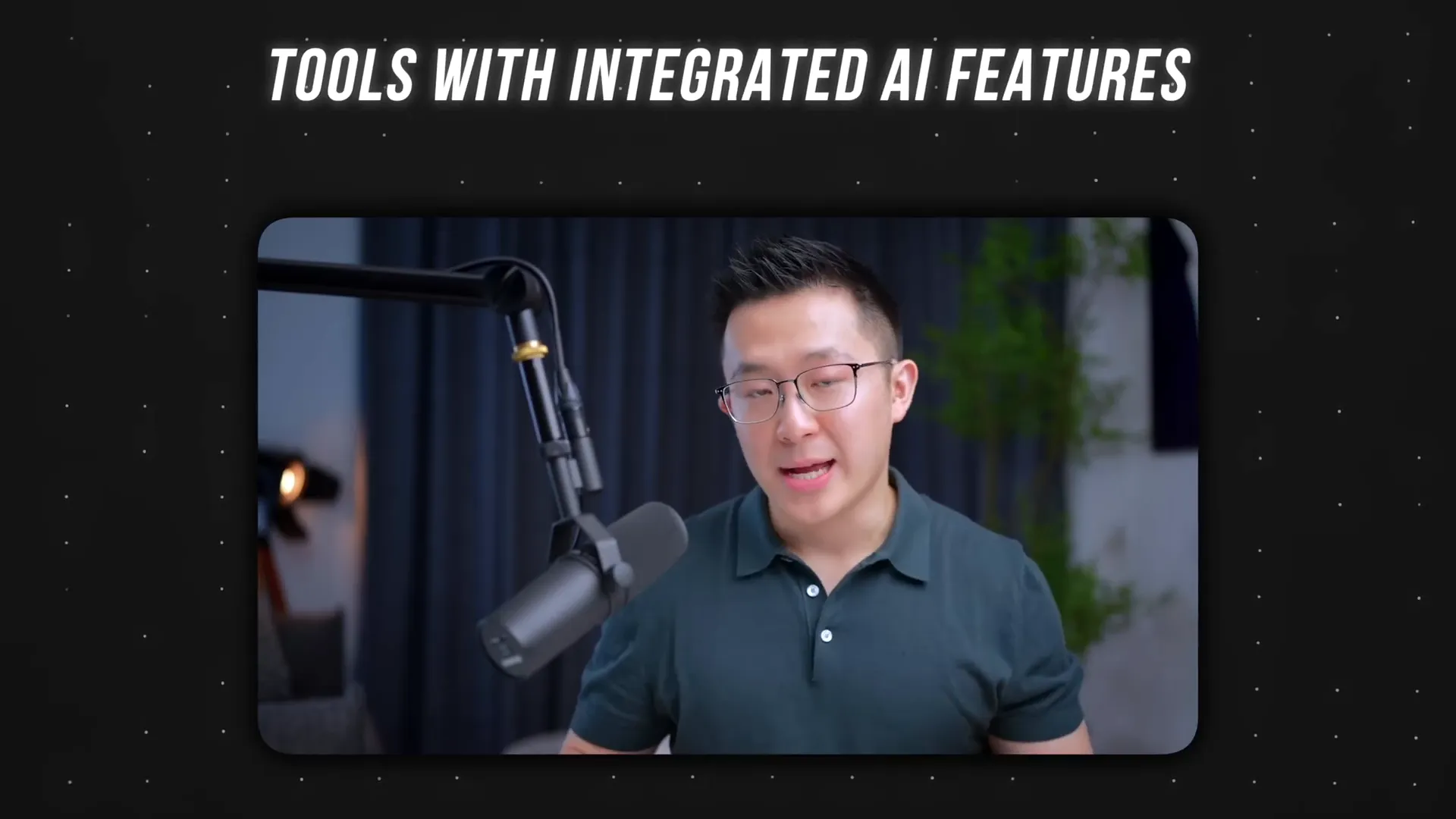
Custom AI Solutions: Tailor-made applications designed to solve specific problems. A prime example is the AI system developed by Johns Hopkins University for detecting sepsis, which drastically improved diagnostic accuracy.
🛠️ Always Surface Implied Context
Secondly, working with AI means that you need to think more about the context that is implied – for example, when you ask for restaurant recommendations, you might think that your friend not eating meat is important context. But AI needs that context to be spelled out for it.
If you’re musing about a negotiation course of action or providing input, make the tacit setting explicit – so that the system gets the picture, and can deliver responses that are more informed and more appropriate to your needs.
🎯 Zero-Shot vs. Few-Shot Prompting
So, time to get down to specifics. There are two main styles: zero-shot and few-shot. Zero-shot is when you provide an AI a prompt with no examples. Few-shot, on the other hand, means you’re providing one or more examples to direct the tone.
For example, if you ask for a pickup line with a zero-shot prompt, you might receive something along the lines of: The stars are in alignment, the moon is high, this is the night of my life.But if you specify your narrow narrative with few-shot prompting, you can provide examples that elicit responses more appropriate for your particular scenario: What do you think about? What show do you like watching? What music do you listen to? … Here’s a line that might work well as you depart: Take me home, and the stars above will follow.And if you want the AI to get really good at producing relevant, evocative verses for nearly any situation, give it lots of examples in which pickup lines are used. The more context you provide, the better the AI will perform!
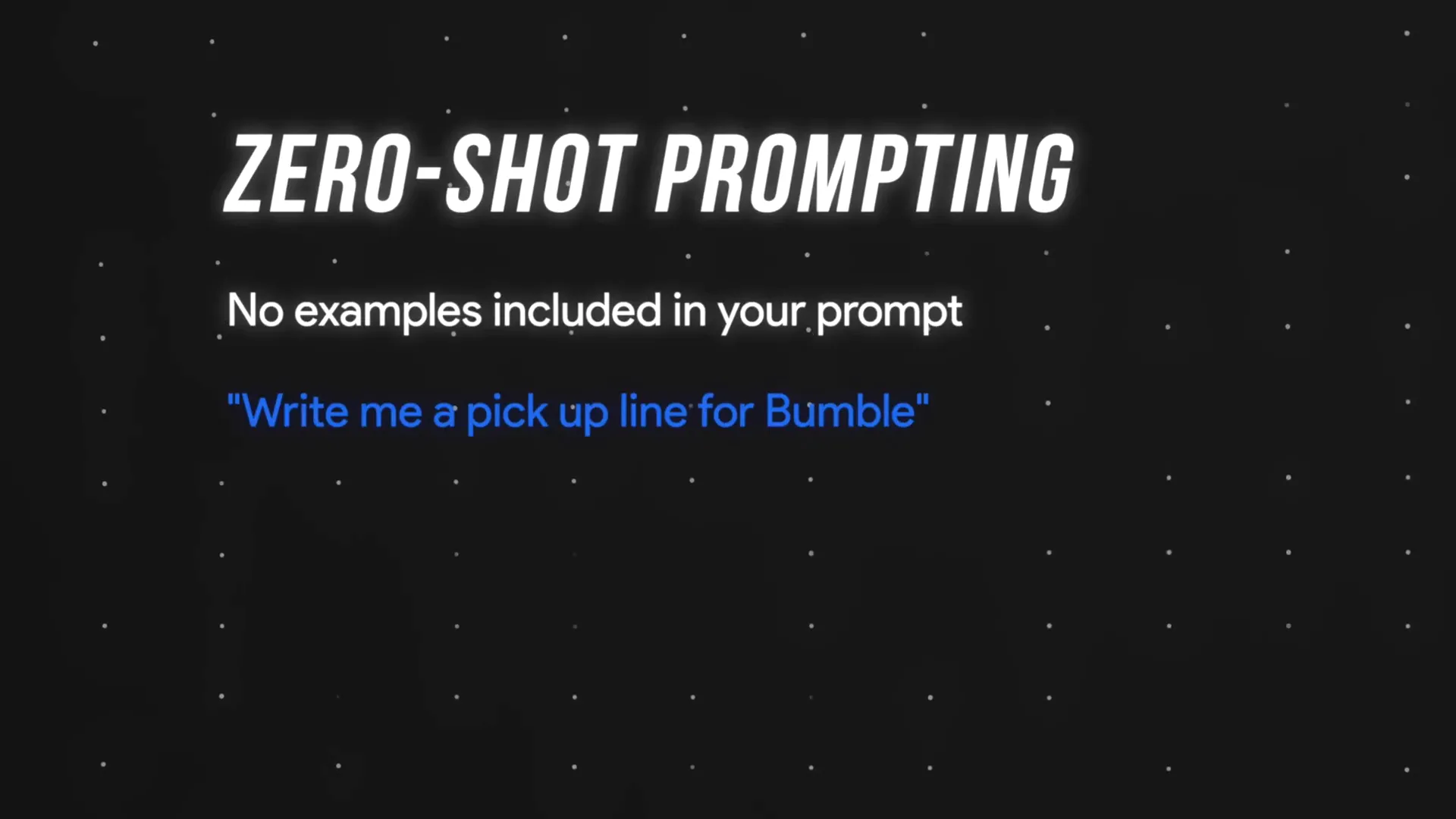
🧩 Chain-of-Thought Prompting
Has a task ever seemed confusing to you? Well, Chain-of-Thought prompting tries to tackle problems by decomposing them into smaller, more manageable chunks. You can think of it as one bite at a time, rather than trying to swallow whole cake.
For instance, in the case of writing a cover letter, you would tell the AI to first write a killer opening paragraph. Once that’s good, carry on with the body of the letter and then the conclusion. This not only makes it easier for the AI to do the job, but it also tends to produce results that are more accurate and more consistent.
🚫 Limitations of AI
Lastly, it’s time to face the elephant in the room: a salient one that is connected to AI limitations. These are not insurmountable barriers, but they represent good things to know for interpreting AI decisions, and to keep in mind when these decisions may impact your life: There are three core limitations for AI: the data-set limitation, the curse of dimensionality, and the black-box limitation.
Bias in Training Data: If the data used to train the AI is biased, the outputs will be as well. For instance, an AI trained only on minimalist designs may struggle with more flamboyant requests.
Data Cutoff Dates: Many AI models have a knowledge cutoff, meaning they won’t have information on recent events or trends.
Hallucinations: Sometimes, AI generates inaccurate or entirely fictional information. Always double-check outputs, especially for critical tasks.
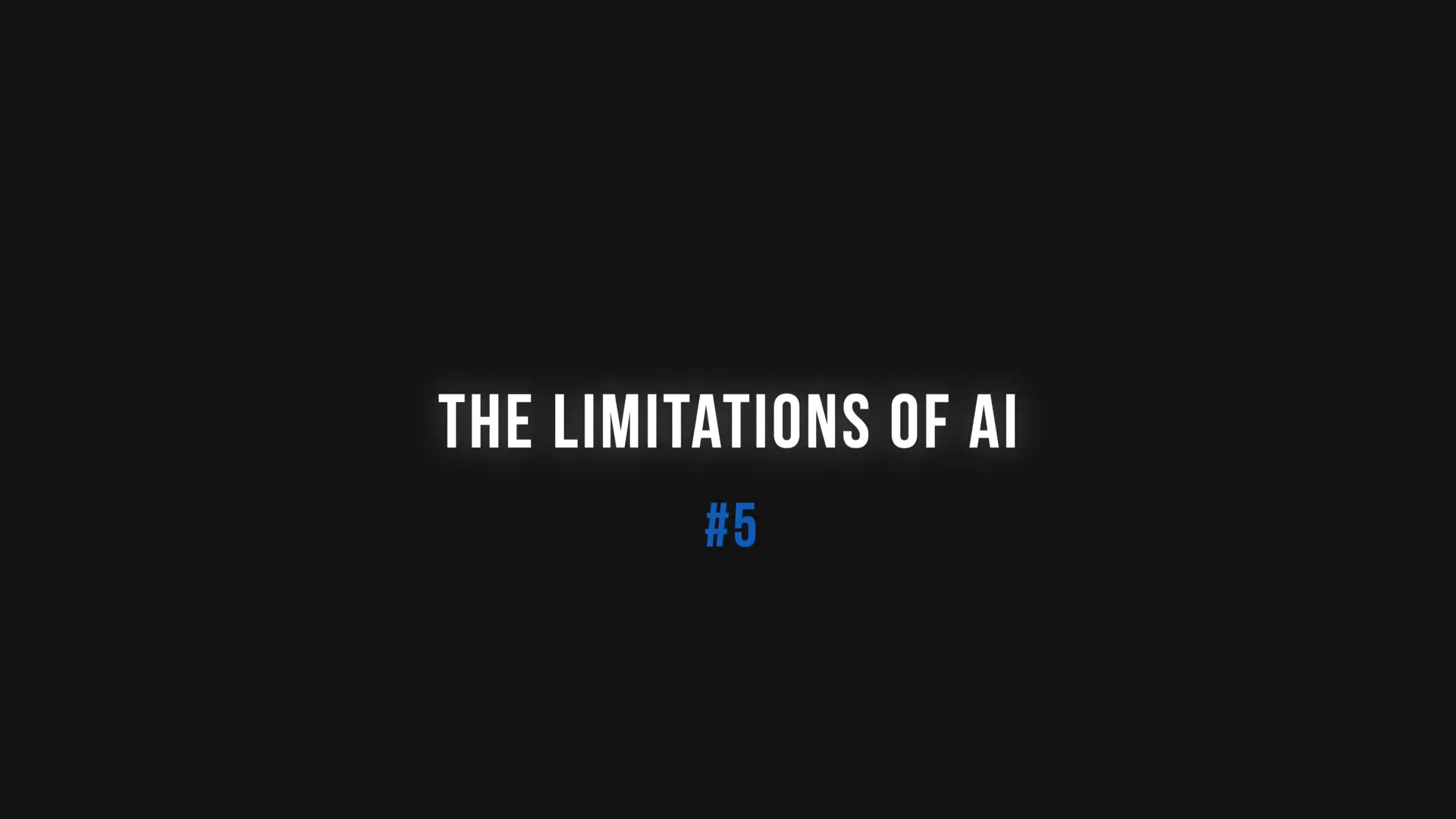
📊 Pros and Cons of Google’s AI Essentials Course
Two sides to every coin … and this course is no exception If you are even slightly familiar with the subject matter, you’ll know you are about to engage in a course that has two sides to every coin.
👍 Pros
Expert Instructors: Learning from Google employees means you’re getting insights from the pros. These are the people who live and breathe AI!
Visual Learning: The course uses simple graphics to explain complex concepts. It’s like having a personal tutor who knows how to make things stick.
Interactive Elements: Engaging activities help solidify your understanding. Forget boring lectures; this course keeps you on your toes!
Curated Tool List: You’ll gain access to a list of beginner-friendly AI tools, making it easier to explore without getting lost.
Certificate of Completion: The shiny certificate at the end can boost your resume. Who doesn’t want to impress potential employers?
👎 Cons
Not for Advanced Users: If you’re already familiar with AI tools, this course might feel like a stroll in the park. Not much depth for seasoned pros!
Vague Examples: Some examples lack depth. For instance, how a company used AI to enhance customer service could use more details.
Limited Scope: The course is designed for beginners, which means advanced topics are brushed over. If you’re looking for in-depth analysis, you might want to look elsewhere.
📚 The Importance of AI Literacy
AI literacy is essential in today’s digital ecology, where speed and change are the norms. The more you can understand AI, the more you can do with it.
Why is that so important? Because AI is transforming industries at lightning speed. Someone who is AI literate becomes seasoned at adapting in any scenario – whether it be the financial or medical industries.
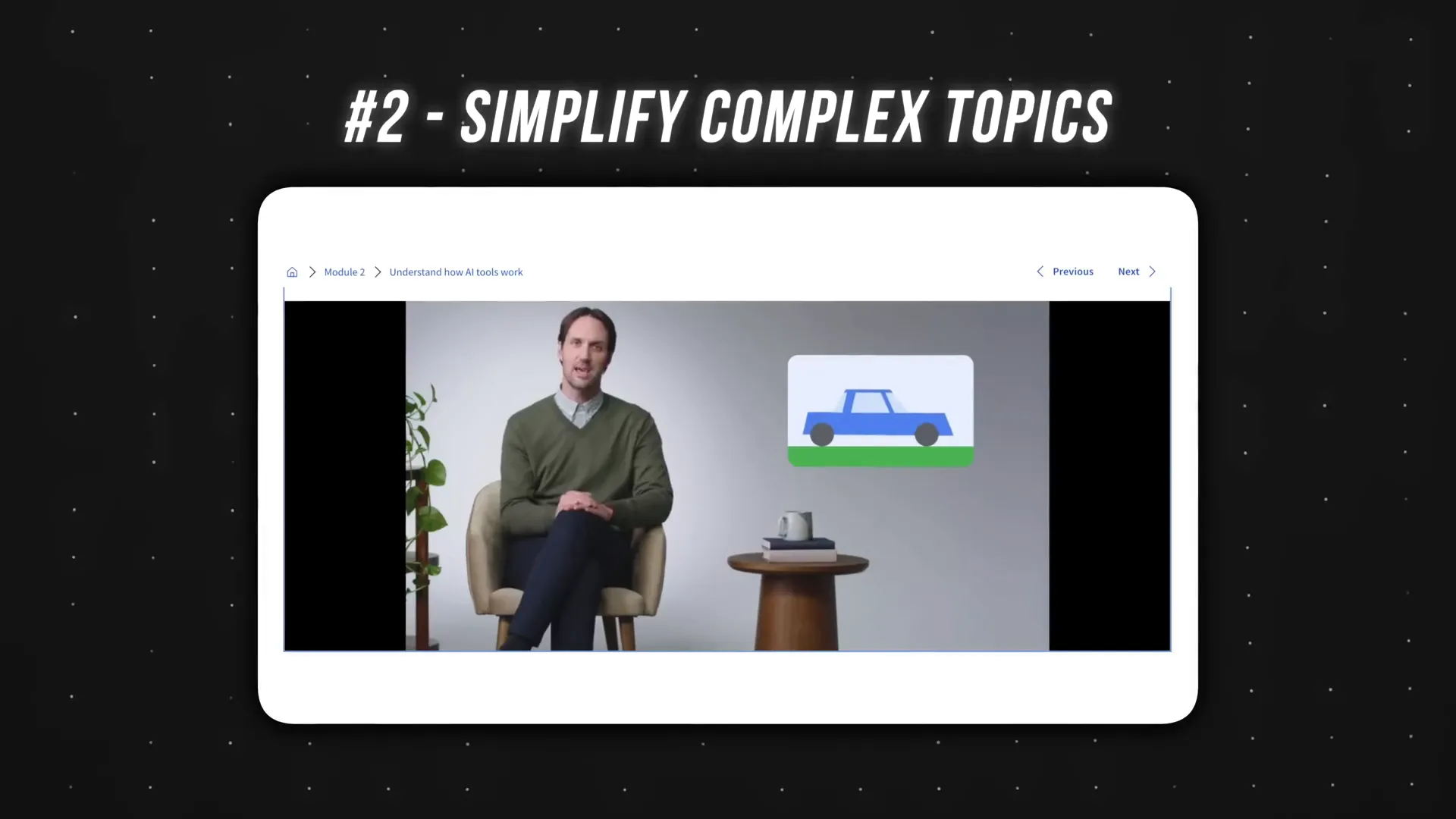
Key Benefits of AI Literacy
Enhanced Decision-Making: With AI knowledge, you can make informed decisions based on data-driven insights.
Competitive Edge: Employers value candidates who understand AI. This skill can set you apart in the job market.
Innovation Opportunities: Understanding AI opens doors to new ideas and solutions, driving innovation in your projects.
🔍 How to Choose the Right AI Tool
So, how do you choose the right AI tool for your needs when there are tons of them out there? We’ve put together a handy guide to help you figure it out.

Factors to Consider
Purpose: What do you need the AI tool for? Identify your goals first, whether it’s for writing, design, or data analysis.
User-Friendliness: Look for tools that are easy to use. A complicated interface can be a huge roadblock.
Integration: Check if the tool integrates with your existing software. Seamless integration can save you tons of time!
Support and Resources: Ensure the tool has adequate support and resources. Tutorials and customer service can make a world of difference.
Cost: Consider your budget. There are plenty of free and paid options available, so choose what fits your needs.
🛠️ Best Practices for Prompt Engineering
The real trick to getting good results out of AI tools lies in mastering prompt engineering – here are some best practices.

Tips for Effective Prompting
Be Specific: The more detailed your prompt, the better the output. Don’t leave room for ambiguity!
Use Examples: Providing examples can dramatically enhance the quality of the responses. Remember the zero-shot and few-shot techniques!
Iterate: Don’t be afraid to tweak your prompts. Experimentation can lead to surprisingly better results.
Break Down Tasks: Use Chain-of-Thought prompting. Break complex tasks into smaller steps for more accurate outputs.
🏢 Understanding AI's Role in Modern Workplaces
AI is no longer a buzzword. It is here to stay, shaping work. Mastering the new roles and relationships made possible by AI can make the difference.
Impact of AI on Work
Increased Efficiency: AI can automate repetitive tasks, allowing employees to focus on higher-value work.
Data-Driven Insights: AI tools can analyze vast amounts of data, providing insights that can drive business strategy.
Enhanced Collaboration: AI can facilitate better communication and collaboration among team members, regardless of location.
The best way for you to prepare for the increasing use of AI in organisations is to be informed and flexible. Make sure you keep up, and you’ll be at the cutting edge.
Ever wondered what artificial intelligence is really all about? Wonder no more. In this blog I’m breaking down, or rather, deconstructing, the main insights from Google’s AI Essentials course, bringing them down to their bare essentials and relating them to a real-world context for the AI beginner.
🚀 I took Google’s AI Essentials Course
Earlier this week, I completed Google’s AI Essentials course. After investing five hours of my life and $49, I exited with a whole new fund of learning. Time well spent? Yes! This course delivers the essentials of AI, at least the present-day concept of it.
What have I learned? Let me unpack my lessons. There is a section about AI tools, which I enjoyed learning about. Another section examines prompt engineering … and… and … And okay, so it is 100 words and I don’t know what to write anymore. Have I learned anything? Well, I know a lot more about AI, and I’m getting better at prompt engineering… but so? It is not as if I’ll be creating actual things with all this knowledge. And anyway, who would read through all that? This is not for me, this is for tech wizards. I’m a novice, and novices like reading articles about things that will magically improve their skills. This is not another tech article.
🔍 There are 3 Types of AI Tools
First off, let’s define the three types of AI tools. Knowing what these are will help you find the tool that most suits your needs.
Standalone Tools: These are your go-to AI software that operates independently. Think of chatbots like ChatGPT and specialized apps like MidJourney. They are designed for minimal setup and are easily accessible.

Integrated AI Features: These tools enhance existing software. For example, Google Docs has integrated AI features that help you refine your writing without leaving the platform.

Custom AI Solutions: Tailor-made applications designed to solve specific problems. A prime example is the AI system developed by Johns Hopkins University for detecting sepsis, which drastically improved diagnostic accuracy.
🛠️ Always Surface Implied Context
Secondly, working with AI means that you need to think more about the context that is implied – for example, when you ask for restaurant recommendations, you might think that your friend not eating meat is important context. But AI needs that context to be spelled out for it.
If you’re musing about a negotiation course of action or providing input, make the tacit setting explicit – so that the system gets the picture, and can deliver responses that are more informed and more appropriate to your needs.
🎯 Zero-Shot vs. Few-Shot Prompting
So, time to get down to specifics. There are two main styles: zero-shot and few-shot. Zero-shot is when you provide an AI a prompt with no examples. Few-shot, on the other hand, means you’re providing one or more examples to direct the tone.
For example, if you ask for a pickup line with a zero-shot prompt, you might receive something along the lines of: The stars are in alignment, the moon is high, this is the night of my life.But if you specify your narrow narrative with few-shot prompting, you can provide examples that elicit responses more appropriate for your particular scenario: What do you think about? What show do you like watching? What music do you listen to? … Here’s a line that might work well as you depart: Take me home, and the stars above will follow.And if you want the AI to get really good at producing relevant, evocative verses for nearly any situation, give it lots of examples in which pickup lines are used. The more context you provide, the better the AI will perform!

🧩 Chain-of-Thought Prompting
Has a task ever seemed confusing to you? Well, Chain-of-Thought prompting tries to tackle problems by decomposing them into smaller, more manageable chunks. You can think of it as one bite at a time, rather than trying to swallow whole cake.
For instance, in the case of writing a cover letter, you would tell the AI to first write a killer opening paragraph. Once that’s good, carry on with the body of the letter and then the conclusion. This not only makes it easier for the AI to do the job, but it also tends to produce results that are more accurate and more consistent.
🚫 Limitations of AI
Lastly, it’s time to face the elephant in the room: a salient one that is connected to AI limitations. These are not insurmountable barriers, but they represent good things to know for interpreting AI decisions, and to keep in mind when these decisions may impact your life: There are three core limitations for AI: the data-set limitation, the curse of dimensionality, and the black-box limitation.
Bias in Training Data: If the data used to train the AI is biased, the outputs will be as well. For instance, an AI trained only on minimalist designs may struggle with more flamboyant requests.
Data Cutoff Dates: Many AI models have a knowledge cutoff, meaning they won’t have information on recent events or trends.
Hallucinations: Sometimes, AI generates inaccurate or entirely fictional information. Always double-check outputs, especially for critical tasks.

📊 Pros and Cons of Google’s AI Essentials Course
Two sides to every coin … and this course is no exception If you are even slightly familiar with the subject matter, you’ll know you are about to engage in a course that has two sides to every coin.
👍 Pros
Expert Instructors: Learning from Google employees means you’re getting insights from the pros. These are the people who live and breathe AI!
Visual Learning: The course uses simple graphics to explain complex concepts. It’s like having a personal tutor who knows how to make things stick.
Interactive Elements: Engaging activities help solidify your understanding. Forget boring lectures; this course keeps you on your toes!
Curated Tool List: You’ll gain access to a list of beginner-friendly AI tools, making it easier to explore without getting lost.
Certificate of Completion: The shiny certificate at the end can boost your resume. Who doesn’t want to impress potential employers?
👎 Cons
Not for Advanced Users: If you’re already familiar with AI tools, this course might feel like a stroll in the park. Not much depth for seasoned pros!
Vague Examples: Some examples lack depth. For instance, how a company used AI to enhance customer service could use more details.
Limited Scope: The course is designed for beginners, which means advanced topics are brushed over. If you’re looking for in-depth analysis, you might want to look elsewhere.
📚 The Importance of AI Literacy
AI literacy is essential in today’s digital ecology, where speed and change are the norms. The more you can understand AI, the more you can do with it.
Why is that so important? Because AI is transforming industries at lightning speed. Someone who is AI literate becomes seasoned at adapting in any scenario – whether it be the financial or medical industries.

Key Benefits of AI Literacy
Enhanced Decision-Making: With AI knowledge, you can make informed decisions based on data-driven insights.
Competitive Edge: Employers value candidates who understand AI. This skill can set you apart in the job market.
Innovation Opportunities: Understanding AI opens doors to new ideas and solutions, driving innovation in your projects.
🔍 How to Choose the Right AI Tool
So, how do you choose the right AI tool for your needs when there are tons of them out there? We’ve put together a handy guide to help you figure it out.

Factors to Consider
Purpose: What do you need the AI tool for? Identify your goals first, whether it’s for writing, design, or data analysis.
User-Friendliness: Look for tools that are easy to use. A complicated interface can be a huge roadblock.
Integration: Check if the tool integrates with your existing software. Seamless integration can save you tons of time!
Support and Resources: Ensure the tool has adequate support and resources. Tutorials and customer service can make a world of difference.
Cost: Consider your budget. There are plenty of free and paid options available, so choose what fits your needs.
🛠️ Best Practices for Prompt Engineering
The real trick to getting good results out of AI tools lies in mastering prompt engineering – here are some best practices.

Tips for Effective Prompting
Be Specific: The more detailed your prompt, the better the output. Don’t leave room for ambiguity!
Use Examples: Providing examples can dramatically enhance the quality of the responses. Remember the zero-shot and few-shot techniques!
Iterate: Don’t be afraid to tweak your prompts. Experimentation can lead to surprisingly better results.
Break Down Tasks: Use Chain-of-Thought prompting. Break complex tasks into smaller steps for more accurate outputs.
🏢 Understanding AI's Role in Modern Workplaces
AI is no longer a buzzword. It is here to stay, shaping work. Mastering the new roles and relationships made possible by AI can make the difference.
Impact of AI on Work
Increased Efficiency: AI can automate repetitive tasks, allowing employees to focus on higher-value work.
Data-Driven Insights: AI tools can analyze vast amounts of data, providing insights that can drive business strategy.
Enhanced Collaboration: AI can facilitate better communication and collaboration among team members, regardless of location.
The best way for you to prepare for the increasing use of AI in organisations is to be informed and flexible. Make sure you keep up, and you’ll be at the cutting edge.
Ever wondered what artificial intelligence is really all about? Wonder no more. In this blog I’m breaking down, or rather, deconstructing, the main insights from Google’s AI Essentials course, bringing them down to their bare essentials and relating them to a real-world context for the AI beginner.
🚀 I took Google’s AI Essentials Course
Earlier this week, I completed Google’s AI Essentials course. After investing five hours of my life and $49, I exited with a whole new fund of learning. Time well spent? Yes! This course delivers the essentials of AI, at least the present-day concept of it.
What have I learned? Let me unpack my lessons. There is a section about AI tools, which I enjoyed learning about. Another section examines prompt engineering … and… and … And okay, so it is 100 words and I don’t know what to write anymore. Have I learned anything? Well, I know a lot more about AI, and I’m getting better at prompt engineering… but so? It is not as if I’ll be creating actual things with all this knowledge. And anyway, who would read through all that? This is not for me, this is for tech wizards. I’m a novice, and novices like reading articles about things that will magically improve their skills. This is not another tech article.
🔍 There are 3 Types of AI Tools
First off, let’s define the three types of AI tools. Knowing what these are will help you find the tool that most suits your needs.
Standalone Tools: These are your go-to AI software that operates independently. Think of chatbots like ChatGPT and specialized apps like MidJourney. They are designed for minimal setup and are easily accessible.

Integrated AI Features: These tools enhance existing software. For example, Google Docs has integrated AI features that help you refine your writing without leaving the platform.

Custom AI Solutions: Tailor-made applications designed to solve specific problems. A prime example is the AI system developed by Johns Hopkins University for detecting sepsis, which drastically improved diagnostic accuracy.
🛠️ Always Surface Implied Context
Secondly, working with AI means that you need to think more about the context that is implied – for example, when you ask for restaurant recommendations, you might think that your friend not eating meat is important context. But AI needs that context to be spelled out for it.
If you’re musing about a negotiation course of action or providing input, make the tacit setting explicit – so that the system gets the picture, and can deliver responses that are more informed and more appropriate to your needs.
🎯 Zero-Shot vs. Few-Shot Prompting
So, time to get down to specifics. There are two main styles: zero-shot and few-shot. Zero-shot is when you provide an AI a prompt with no examples. Few-shot, on the other hand, means you’re providing one or more examples to direct the tone.
For example, if you ask for a pickup line with a zero-shot prompt, you might receive something along the lines of: The stars are in alignment, the moon is high, this is the night of my life.But if you specify your narrow narrative with few-shot prompting, you can provide examples that elicit responses more appropriate for your particular scenario: What do you think about? What show do you like watching? What music do you listen to? … Here’s a line that might work well as you depart: Take me home, and the stars above will follow.And if you want the AI to get really good at producing relevant, evocative verses for nearly any situation, give it lots of examples in which pickup lines are used. The more context you provide, the better the AI will perform!

🧩 Chain-of-Thought Prompting
Has a task ever seemed confusing to you? Well, Chain-of-Thought prompting tries to tackle problems by decomposing them into smaller, more manageable chunks. You can think of it as one bite at a time, rather than trying to swallow whole cake.
For instance, in the case of writing a cover letter, you would tell the AI to first write a killer opening paragraph. Once that’s good, carry on with the body of the letter and then the conclusion. This not only makes it easier for the AI to do the job, but it also tends to produce results that are more accurate and more consistent.
🚫 Limitations of AI
Lastly, it’s time to face the elephant in the room: a salient one that is connected to AI limitations. These are not insurmountable barriers, but they represent good things to know for interpreting AI decisions, and to keep in mind when these decisions may impact your life: There are three core limitations for AI: the data-set limitation, the curse of dimensionality, and the black-box limitation.
Bias in Training Data: If the data used to train the AI is biased, the outputs will be as well. For instance, an AI trained only on minimalist designs may struggle with more flamboyant requests.
Data Cutoff Dates: Many AI models have a knowledge cutoff, meaning they won’t have information on recent events or trends.
Hallucinations: Sometimes, AI generates inaccurate or entirely fictional information. Always double-check outputs, especially for critical tasks.

📊 Pros and Cons of Google’s AI Essentials Course
Two sides to every coin … and this course is no exception If you are even slightly familiar with the subject matter, you’ll know you are about to engage in a course that has two sides to every coin.
👍 Pros
Expert Instructors: Learning from Google employees means you’re getting insights from the pros. These are the people who live and breathe AI!
Visual Learning: The course uses simple graphics to explain complex concepts. It’s like having a personal tutor who knows how to make things stick.
Interactive Elements: Engaging activities help solidify your understanding. Forget boring lectures; this course keeps you on your toes!
Curated Tool List: You’ll gain access to a list of beginner-friendly AI tools, making it easier to explore without getting lost.
Certificate of Completion: The shiny certificate at the end can boost your resume. Who doesn’t want to impress potential employers?
👎 Cons
Not for Advanced Users: If you’re already familiar with AI tools, this course might feel like a stroll in the park. Not much depth for seasoned pros!
Vague Examples: Some examples lack depth. For instance, how a company used AI to enhance customer service could use more details.
Limited Scope: The course is designed for beginners, which means advanced topics are brushed over. If you’re looking for in-depth analysis, you might want to look elsewhere.
📚 The Importance of AI Literacy
AI literacy is essential in today’s digital ecology, where speed and change are the norms. The more you can understand AI, the more you can do with it.
Why is that so important? Because AI is transforming industries at lightning speed. Someone who is AI literate becomes seasoned at adapting in any scenario – whether it be the financial or medical industries.

Key Benefits of AI Literacy
Enhanced Decision-Making: With AI knowledge, you can make informed decisions based on data-driven insights.
Competitive Edge: Employers value candidates who understand AI. This skill can set you apart in the job market.
Innovation Opportunities: Understanding AI opens doors to new ideas and solutions, driving innovation in your projects.
🔍 How to Choose the Right AI Tool
So, how do you choose the right AI tool for your needs when there are tons of them out there? We’ve put together a handy guide to help you figure it out.

Factors to Consider
Purpose: What do you need the AI tool for? Identify your goals first, whether it’s for writing, design, or data analysis.
User-Friendliness: Look for tools that are easy to use. A complicated interface can be a huge roadblock.
Integration: Check if the tool integrates with your existing software. Seamless integration can save you tons of time!
Support and Resources: Ensure the tool has adequate support and resources. Tutorials and customer service can make a world of difference.
Cost: Consider your budget. There are plenty of free and paid options available, so choose what fits your needs.
🛠️ Best Practices for Prompt Engineering
The real trick to getting good results out of AI tools lies in mastering prompt engineering – here are some best practices.

Tips for Effective Prompting
Be Specific: The more detailed your prompt, the better the output. Don’t leave room for ambiguity!
Use Examples: Providing examples can dramatically enhance the quality of the responses. Remember the zero-shot and few-shot techniques!
Iterate: Don’t be afraid to tweak your prompts. Experimentation can lead to surprisingly better results.
Break Down Tasks: Use Chain-of-Thought prompting. Break complex tasks into smaller steps for more accurate outputs.
🏢 Understanding AI's Role in Modern Workplaces
AI is no longer a buzzword. It is here to stay, shaping work. Mastering the new roles and relationships made possible by AI can make the difference.
Impact of AI on Work
Increased Efficiency: AI can automate repetitive tasks, allowing employees to focus on higher-value work.
Data-Driven Insights: AI tools can analyze vast amounts of data, providing insights that can drive business strategy.
Enhanced Collaboration: AI can facilitate better communication and collaboration among team members, regardless of location.
The best way for you to prepare for the increasing use of AI in organisations is to be informed and flexible. Make sure you keep up, and you’ll be at the cutting edge.
Ever wondered what artificial intelligence is really all about? Wonder no more. In this blog I’m breaking down, or rather, deconstructing, the main insights from Google’s AI Essentials course, bringing them down to their bare essentials and relating them to a real-world context for the AI beginner.
🚀 I took Google’s AI Essentials Course
Earlier this week, I completed Google’s AI Essentials course. After investing five hours of my life and $49, I exited with a whole new fund of learning. Time well spent? Yes! This course delivers the essentials of AI, at least the present-day concept of it.
What have I learned? Let me unpack my lessons. There is a section about AI tools, which I enjoyed learning about. Another section examines prompt engineering … and… and … And okay, so it is 100 words and I don’t know what to write anymore. Have I learned anything? Well, I know a lot more about AI, and I’m getting better at prompt engineering… but so? It is not as if I’ll be creating actual things with all this knowledge. And anyway, who would read through all that? This is not for me, this is for tech wizards. I’m a novice, and novices like reading articles about things that will magically improve their skills. This is not another tech article.
🔍 There are 3 Types of AI Tools
First off, let’s define the three types of AI tools. Knowing what these are will help you find the tool that most suits your needs.
Standalone Tools: These are your go-to AI software that operates independently. Think of chatbots like ChatGPT and specialized apps like MidJourney. They are designed for minimal setup and are easily accessible.

Integrated AI Features: These tools enhance existing software. For example, Google Docs has integrated AI features that help you refine your writing without leaving the platform.

Custom AI Solutions: Tailor-made applications designed to solve specific problems. A prime example is the AI system developed by Johns Hopkins University for detecting sepsis, which drastically improved diagnostic accuracy.
🛠️ Always Surface Implied Context
Secondly, working with AI means that you need to think more about the context that is implied – for example, when you ask for restaurant recommendations, you might think that your friend not eating meat is important context. But AI needs that context to be spelled out for it.
If you’re musing about a negotiation course of action or providing input, make the tacit setting explicit – so that the system gets the picture, and can deliver responses that are more informed and more appropriate to your needs.
🎯 Zero-Shot vs. Few-Shot Prompting
So, time to get down to specifics. There are two main styles: zero-shot and few-shot. Zero-shot is when you provide an AI a prompt with no examples. Few-shot, on the other hand, means you’re providing one or more examples to direct the tone.
For example, if you ask for a pickup line with a zero-shot prompt, you might receive something along the lines of: The stars are in alignment, the moon is high, this is the night of my life.But if you specify your narrow narrative with few-shot prompting, you can provide examples that elicit responses more appropriate for your particular scenario: What do you think about? What show do you like watching? What music do you listen to? … Here’s a line that might work well as you depart: Take me home, and the stars above will follow.And if you want the AI to get really good at producing relevant, evocative verses for nearly any situation, give it lots of examples in which pickup lines are used. The more context you provide, the better the AI will perform!

🧩 Chain-of-Thought Prompting
Has a task ever seemed confusing to you? Well, Chain-of-Thought prompting tries to tackle problems by decomposing them into smaller, more manageable chunks. You can think of it as one bite at a time, rather than trying to swallow whole cake.
For instance, in the case of writing a cover letter, you would tell the AI to first write a killer opening paragraph. Once that’s good, carry on with the body of the letter and then the conclusion. This not only makes it easier for the AI to do the job, but it also tends to produce results that are more accurate and more consistent.
🚫 Limitations of AI
Lastly, it’s time to face the elephant in the room: a salient one that is connected to AI limitations. These are not insurmountable barriers, but they represent good things to know for interpreting AI decisions, and to keep in mind when these decisions may impact your life: There are three core limitations for AI: the data-set limitation, the curse of dimensionality, and the black-box limitation.
Bias in Training Data: If the data used to train the AI is biased, the outputs will be as well. For instance, an AI trained only on minimalist designs may struggle with more flamboyant requests.
Data Cutoff Dates: Many AI models have a knowledge cutoff, meaning they won’t have information on recent events or trends.
Hallucinations: Sometimes, AI generates inaccurate or entirely fictional information. Always double-check outputs, especially for critical tasks.

📊 Pros and Cons of Google’s AI Essentials Course
Two sides to every coin … and this course is no exception If you are even slightly familiar with the subject matter, you’ll know you are about to engage in a course that has two sides to every coin.
👍 Pros
Expert Instructors: Learning from Google employees means you’re getting insights from the pros. These are the people who live and breathe AI!
Visual Learning: The course uses simple graphics to explain complex concepts. It’s like having a personal tutor who knows how to make things stick.
Interactive Elements: Engaging activities help solidify your understanding. Forget boring lectures; this course keeps you on your toes!
Curated Tool List: You’ll gain access to a list of beginner-friendly AI tools, making it easier to explore without getting lost.
Certificate of Completion: The shiny certificate at the end can boost your resume. Who doesn’t want to impress potential employers?
👎 Cons
Not for Advanced Users: If you’re already familiar with AI tools, this course might feel like a stroll in the park. Not much depth for seasoned pros!
Vague Examples: Some examples lack depth. For instance, how a company used AI to enhance customer service could use more details.
Limited Scope: The course is designed for beginners, which means advanced topics are brushed over. If you’re looking for in-depth analysis, you might want to look elsewhere.
📚 The Importance of AI Literacy
AI literacy is essential in today’s digital ecology, where speed and change are the norms. The more you can understand AI, the more you can do with it.
Why is that so important? Because AI is transforming industries at lightning speed. Someone who is AI literate becomes seasoned at adapting in any scenario – whether it be the financial or medical industries.

Key Benefits of AI Literacy
Enhanced Decision-Making: With AI knowledge, you can make informed decisions based on data-driven insights.
Competitive Edge: Employers value candidates who understand AI. This skill can set you apart in the job market.
Innovation Opportunities: Understanding AI opens doors to new ideas and solutions, driving innovation in your projects.
🔍 How to Choose the Right AI Tool
So, how do you choose the right AI tool for your needs when there are tons of them out there? We’ve put together a handy guide to help you figure it out.

Factors to Consider
Purpose: What do you need the AI tool for? Identify your goals first, whether it’s for writing, design, or data analysis.
User-Friendliness: Look for tools that are easy to use. A complicated interface can be a huge roadblock.
Integration: Check if the tool integrates with your existing software. Seamless integration can save you tons of time!
Support and Resources: Ensure the tool has adequate support and resources. Tutorials and customer service can make a world of difference.
Cost: Consider your budget. There are plenty of free and paid options available, so choose what fits your needs.
🛠️ Best Practices for Prompt Engineering
The real trick to getting good results out of AI tools lies in mastering prompt engineering – here are some best practices.

Tips for Effective Prompting
Be Specific: The more detailed your prompt, the better the output. Don’t leave room for ambiguity!
Use Examples: Providing examples can dramatically enhance the quality of the responses. Remember the zero-shot and few-shot techniques!
Iterate: Don’t be afraid to tweak your prompts. Experimentation can lead to surprisingly better results.
Break Down Tasks: Use Chain-of-Thought prompting. Break complex tasks into smaller steps for more accurate outputs.
🏢 Understanding AI's Role in Modern Workplaces
AI is no longer a buzzword. It is here to stay, shaping work. Mastering the new roles and relationships made possible by AI can make the difference.
Impact of AI on Work
Increased Efficiency: AI can automate repetitive tasks, allowing employees to focus on higher-value work.
Data-Driven Insights: AI tools can analyze vast amounts of data, providing insights that can drive business strategy.
Enhanced Collaboration: AI can facilitate better communication and collaboration among team members, regardless of location.
The best way for you to prepare for the increasing use of AI in organisations is to be informed and flexible. Make sure you keep up, and you’ll be at the cutting edge.





